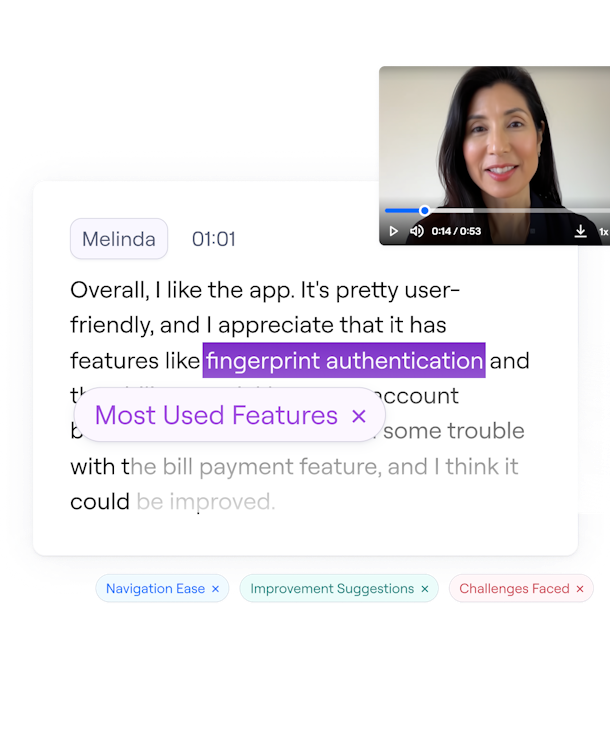Chapter 7
The best user interview tools for remote UX research
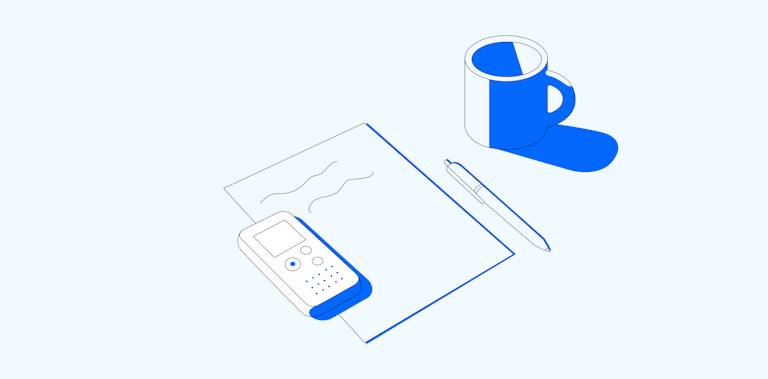
Conducting user interviews involves a lot of moving parts. From recruiting participants and scheduling interviews, to transcribing responses and analyzing data—there’s a seemingly endless list of jobs to keep track of.
However, they’re not tasks you need to face alone. With a good user interview tool, you can automate certain tasks and speed up the rest.
But with so many user testing tools on the market, how do you find the one that’s tuned to your goals and budget?
We reviewed the best options for your shortlist and put them head-to-head below, so you can quickly find the right tool for your user interview process.
Why do you need a user interview tool?
TL;DR: User interview tools speed up your interview and analysis process, helping you speak to users, collect insights, and understand user behaviors. User interview tools on the market offer solutions like participant recruitment, timestamps notes, automated transcription and reporting.
The result? You’re left with more time for high-value tasks, like sharing results with stakeholders and actioning the insights you uncover.
A good tool can streamline the process of conducting user interviews and bring objectivity to your UX research. It enables you to move with speed and precision by effortlessly scheduling interviews, organizing responses, and analyzing data. These tools also cut down on manual tasks to maximize productivity and speed up the user research process.
Besides these core benefits, here are a few other reasons you need a user interview tool:
- Minimize interviewer bias: User interview tools standardize the interview process and create more consistency in how you collect information. You can maintain a higher degree of objectivity and avoid influencing users' responses with cognitive biases.
- Remote participant access: User testing tools allow you to connect with participants across different geographies and maximize diversity in your research. This will enhance the cultural context to understand how people use your product in different parts of the world. Remote user research also make your interview process more accessible for users with disabilities who would prefer to connect from home.
- Capture and annotate multimedia: You can capture audio and video recordings of your interviews, then annotate and analyze these multimedia assets to extract customer insights. Storing these assets in your user interview tool account means you can revisit them anytime in the future.
- Shared understanding of user needs: Many user interview tools offer strong collaboration capabilities, with centralized storage and shared reports making it easier to educate your entire team about user expectations. You’re better equipped to work in a cross-functional setup and collaboratively build your product strategy.
You can also integrate several user interview tools with your user research repositories or qualitative data analysis tools. This works well for synthesizing customer feedback from different studies to deepen your understanding of user behaviors.
Top 7 user interview tools for managing participants, running user interviews, and analysis
Here’s an overview of the seven top user interview tools we’ve shortlisted and reviewed.
1. Maze
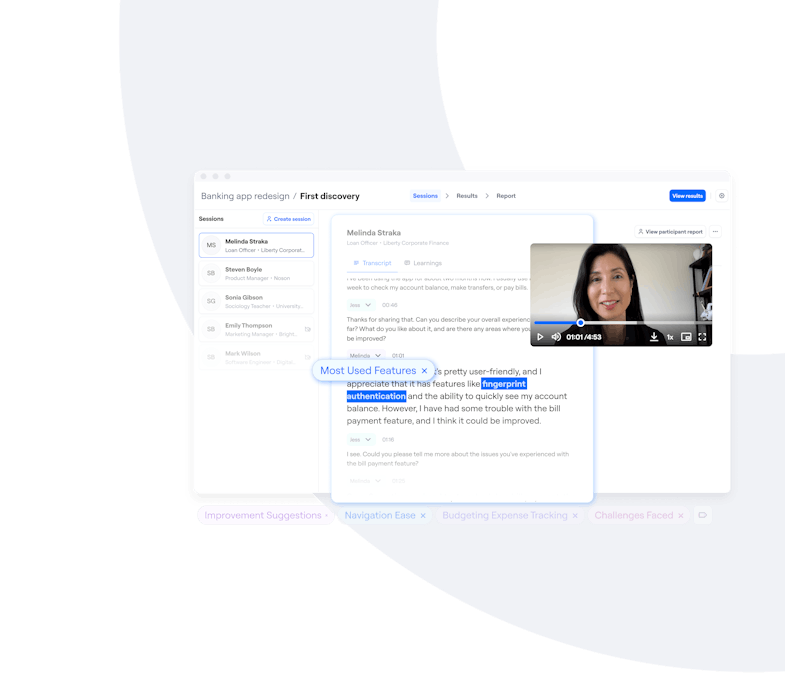
Maze is the leading user research platform offering a suite of tools to conduct end-to-end product research, from interviews and UX surveys to usability testing and prototype testing. It enables strategic decision-making for UX design and development and helps build an airtight research ops setup.
The Maze Panel enables you to recruit your own users for research studies, or filter and choose from its database of over 280 million real users from 130+ countries. You can then keep track of participants from existing and previous research projects in the platform’s purpose-built UX-focused CRM, Reach.
While it’s an all-in-one solution for planning and managing interviews effortlessly, Maze’s gold-star feature lies in the analysis of your interview studies. Quickly and easily uncover insights with AI-powered thematic analysis, which identifies key themes and user thoughts from your user interviews. Let AI do the heavy lifting by identifying key moments, saving clips, and generating customizable research reports for you to share.
Key features
- Recruit participants in a snap: Find your ideal research participants for any research study from Maze Panel with 280+ million pre-screened participants.
- Manage respondents: Whether you bring your own users to the interview table or recruit participants using Maze Panel, manage all communications effortlessly with Reach
- Transcribe interviews effortlessly: Capture the entire recording of your conversation and get AI-generated transcriptions + key highlights upon completing the interview
- AI for moderated studies: Run fully automated interviews with dynamic probing, real-time adaptation, and built-in reporting
- Analyze & extract insights with AI: Identify major patterns and trends in your interviews and bucket them under different themes
- Generate ready-to-share reports: Create comprehensive, visual-rich reports with accurate insights from your entire study then share it with anyone, anywhere
- Integrate into your existing workflows: Conducting user interviews with Maze won’t become a blocker in your current process—easily integrate with calendar and video conferencing tools to streamline your workflows
Plus, Maze Clips helps you turn any usability tests into unmoderated interviews by capturing video and audio recordings from test participants. It’s a quick and easy way to get additional qualitative insights from users without needing to schedule follow-up interviews.
Pricing
The Free plan lets you conduct one active study every month with up to five members in your workspace. Enterprise plans offer custom study quantities and unlimited seats.
2. Zoom
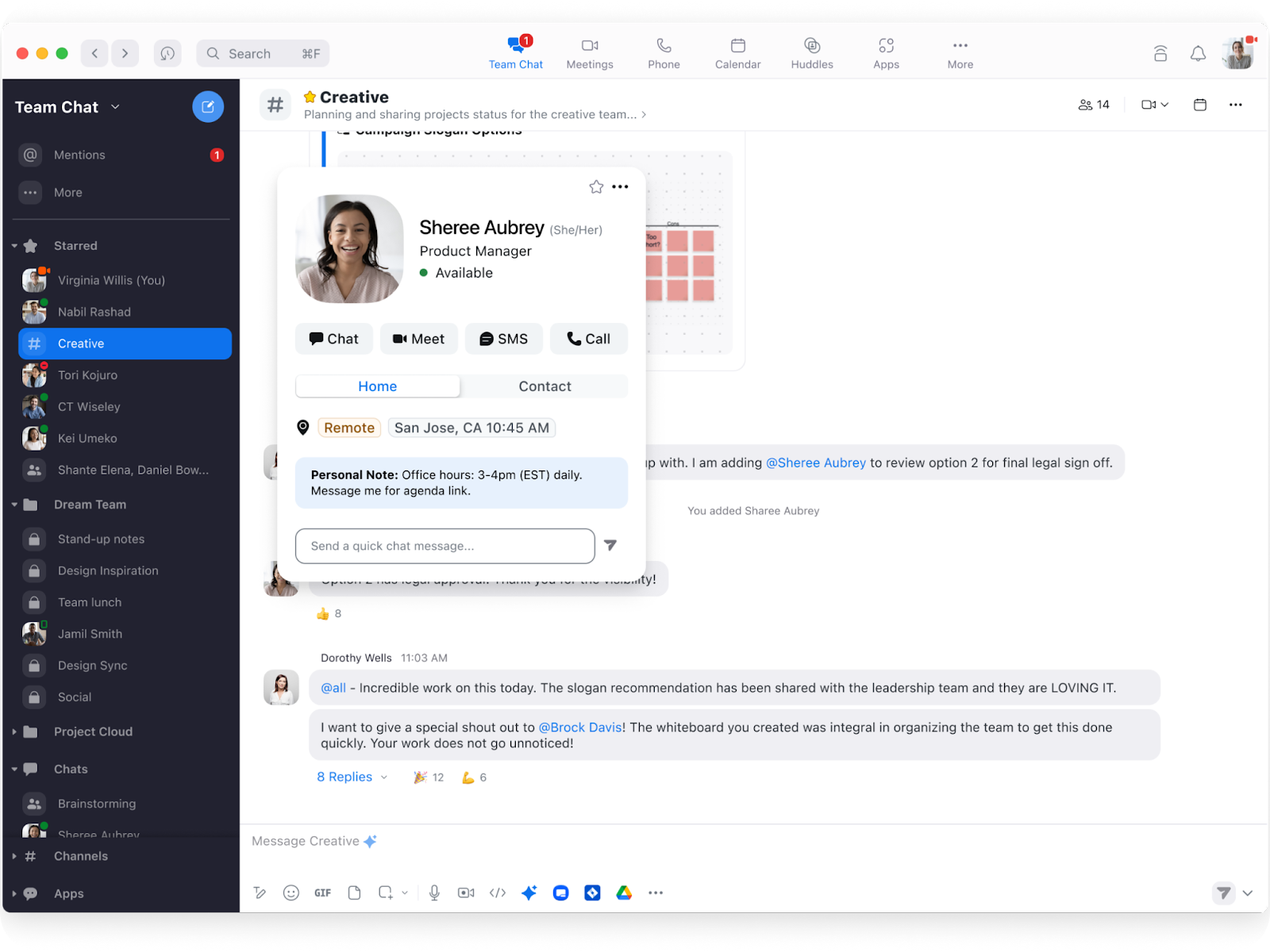
Zoom is a popular video conferencing tool that doubles as a user interview tool for many UX teams. While its primary use case is remote collaboration, you can also use the app to speak with users in a remote interview setup.
The built-in chat function allows interviewers to interact with participants before and after the interview to share relevant information. It also offers multi-language captioning and translations for interviewing a global audience.
However, Zoom is limited to video meetings and doesn't provide native solutions that let you analyze interviews or document your insights.
Key features
- Ease of scheduling: Schedule interview meetings directly from Gmail, Outlook, or iCalendar
- HD video and audio quality: You’ll like Zoom if you want to record high-quality media for your UX research
- Highly secure environment: Zoom also brings high security with password protection, role-based security, and waiting rooms
- Communicate with large groups: Chat with a large group of people and search within your chats to find relevant insights
Pricing
The free plan allows up to 1-hour long meetings, with paid plans starting at $13.33 per month/user. Alternatively, you can access paid add-ons at variable price points, such as $5 per month for translated captions, $24.90 per month for whiteboards, and more.
3. Hotjar
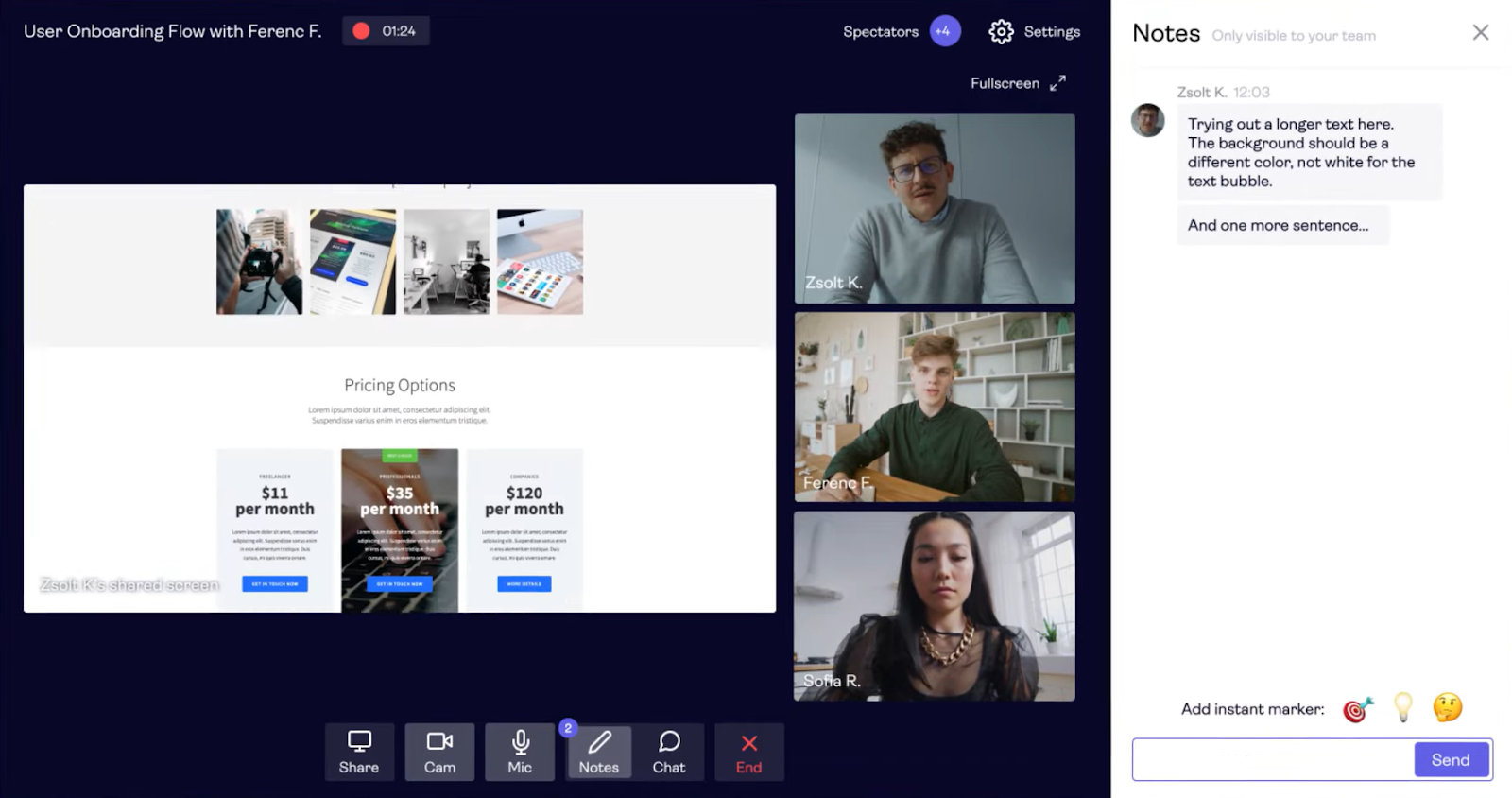
Hotjar Engage is a part of Hotjar’s suite of tools for understanding user behavior. With Engage, you can recruit participants for your research studies, schedule interviews, and analyze user feedback sessions.
Hotjar provides a pool of 200,000+ testers from which you can recruit participants for your UX research. Once recruited, you can use the tool to efficiently manage their activities and incentives.
Besides interviews, you can also rewatch session recordings, see heatmaps, and conduct A/B testing to closely monitor user behavior.
Key features
- Built-in video hosting: Conduct video interviews within Hotjar and extract short clips from for your research report
- Multilingual transcripts: Transcribe a session in multiple languages to facilitate international user interviews
- Add notes to analyze sessions: Document your thoughts and add notes during the interview
- Invite moderators and observers: Add more moderators to steer the discussion or include multiple stakeholders as observers
Pricing
The free forever plan allows three free interviews, up to 30 minutes in length, each month. Paid plans start at €82.50 per month, with nine interviews of 45 minutes every month.
4. Optimal Workshop
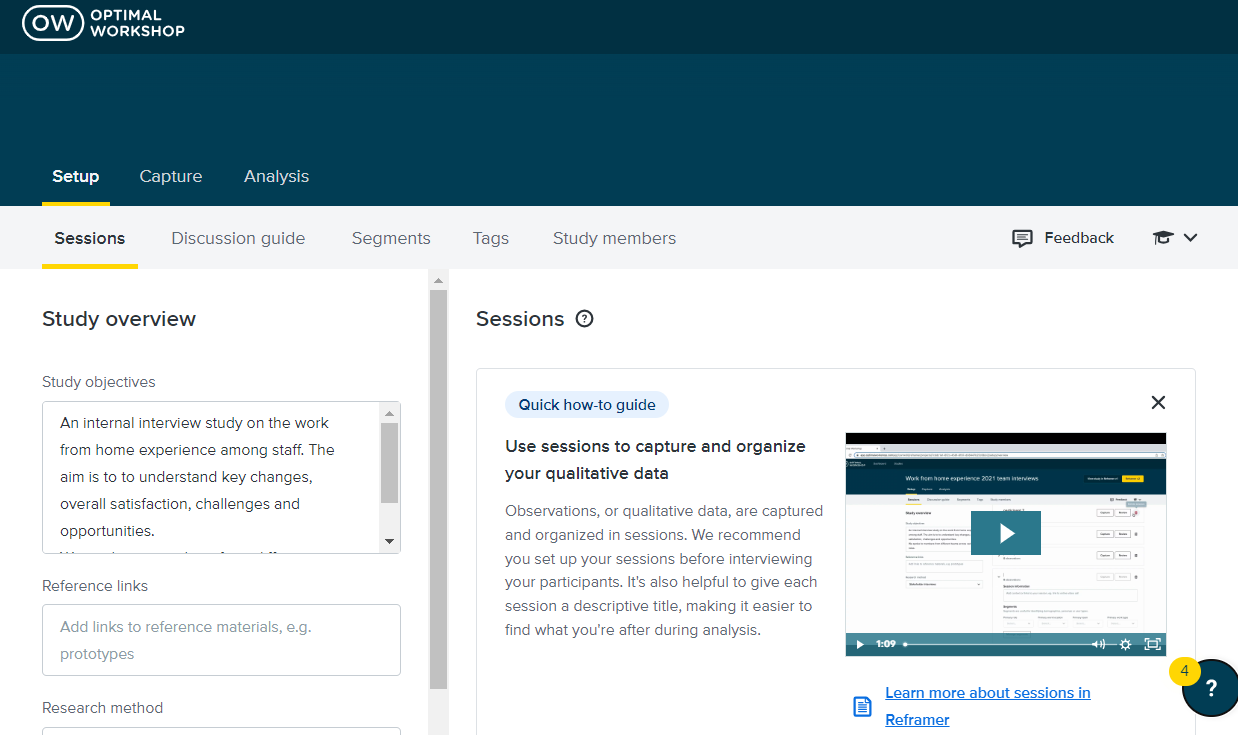
Reframer by Optimal Workshop is a qualitative data analysis platform with the tools to conduct user interviews, extract insights, and visualize your findings.
When setting up a study, you can create tags that Reframer will use to categorize insights from your interviews into different themes. This makes it possible to complete a post-study analysis and uncover actionable insights with neatly visualized data.
Key features
- Recruit from a participant panel: You can find the research participants for your research from Reframer’s pool of participants
- Tagging and segmentation: Set up tags and segments before interviewing users to pull user quotes or insights under specific themes
- Invite guest notetakers: Add people to your study as collaborators to take notes
- Multiple analysis methods: Analyze interviews using various methods, such as affinity mapping and thematic analysis
Pricing
The free plan allows you to conduct up to three user interviews with a maximum of 10 participants, however paid plans start at steep $208 per month for additional interview sessions.
5. Lookback
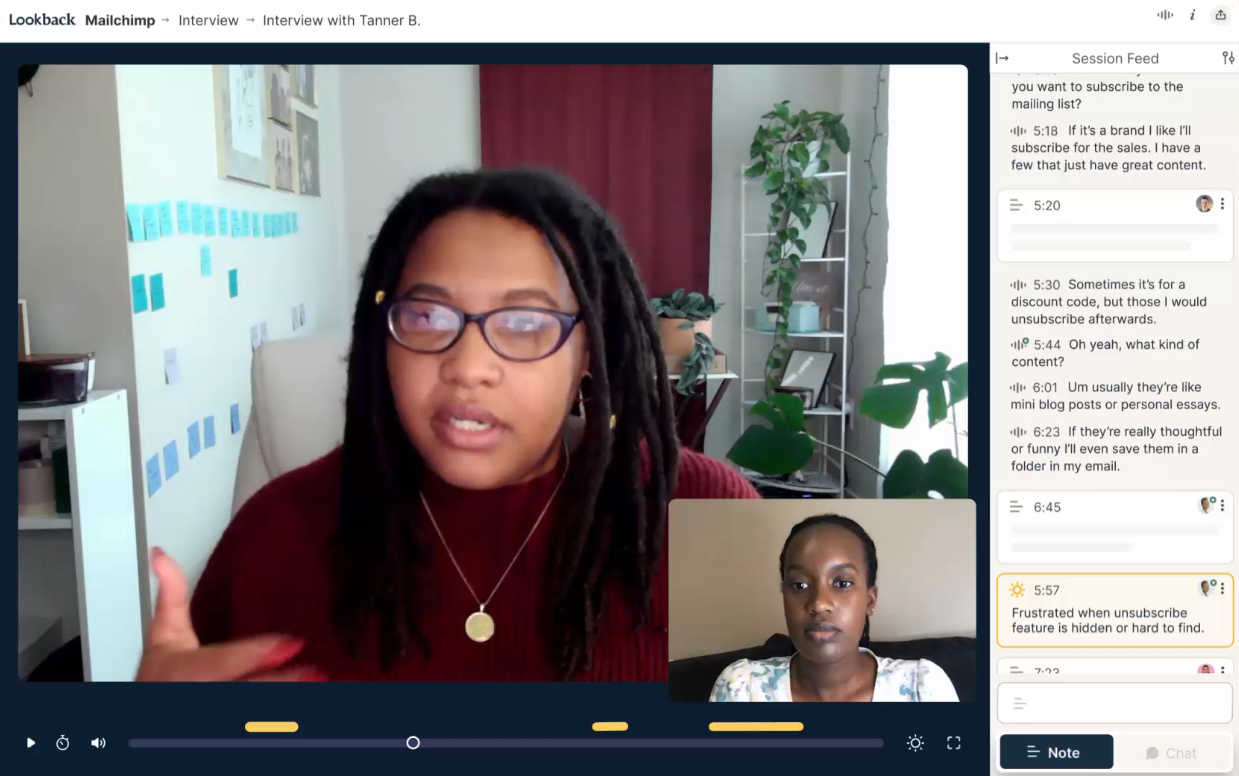
Lookback is a qualitative research tool that allows you to conduct user interviews across devices. The tool’s native video conferencing platform records and saves all your sessions on the cloud so you can access them anywhere.
The interview player is designed for real-time notetaking or creating timestamped notes when you’re analyzing your remote user research data. You can also invite other stakeholders to your moderated research sessions with virtual observation rooms.
Key features
- Easily share insights: Share a research study using a link or add people to your team and collaborate with them on interview analysis
- Access session recordings: Session recordings are directly uploaded to the cloud, so you can access them later
- Recruit & manage participants: Lookback integrates with User Interviews to help you find research participants from a global panel
Pricing
While Lookback doesn’t offer a free plan, their paid plans start at $25 per month with a 60-day free trial available.
6. dscout
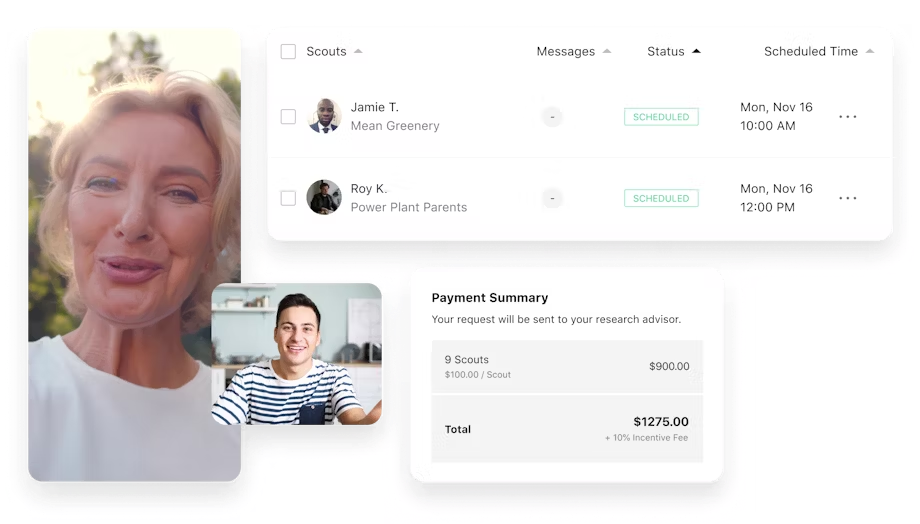
dscout Live is a moderated research tool built for user interviews that specializes in providing easy collaboration capabilities. Live works to streamline the logistics of user interviews by providing solutions to help manage the backend operations of interview studies.
You can recruit participants from a pool of 100,000+ screened users then schedule and manage interviews in the app. You can also take notes in real-time and analyze each session post-recording.
Key features
- Analyze interviews: Make time-stamped notes and create time markers during the session, then highlight key quotes and create themes post-interview
- Invite collaborators: Add observers or colleagues to an interview to share customer feedback
- Manage operational aspects: Communicate with your research participants, share NDAs, send incentives, and handle behind-the-scenes steps
Pricing
dscout’s pricing is provided on a case-by-case basis.
7. Lyssna (formerly UsabilityHub)
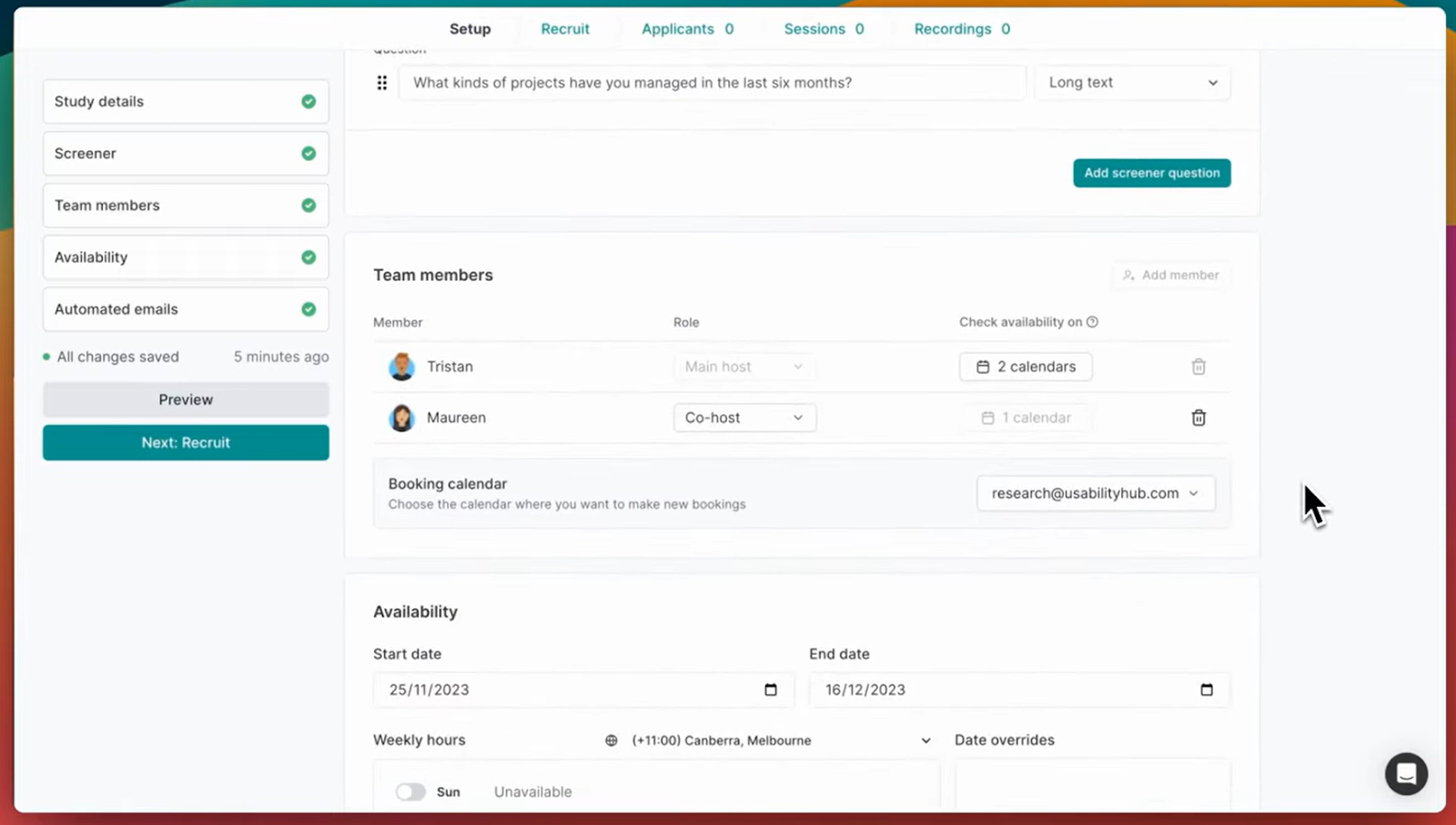
Lyssna is a remote user research platform that helps UX teams recruit participants, schedule interviews, conduct sessions, and analyze customer feedback.
You can hire participants from Lyssna's database of testers, and the tool lets you add custom screener surveys to remove unqualified participants from your study.
Features
- Qualify participants: Recruit from a participant database and qualify testers based on attributes like age, location, and job role
- Schedule & manage sessions: Sync calendars to find the available timeslots for participants
- Automate reminders: Send reminders and follow-up messages to participants
- Easy tracking with a dashboard: View of all participant data and activities on a single dashboard to map progress
Pricing
The free-forever plan allows you to conduct five interviews with self-recruited participants and five hours of transcription. Paid plans start at $75 per month with 15 interviews available.
How to select the right user research tool for your UX interviews
User interviews are a very accessible research method—it’s part of why they’re so valuable. In their simplest form, they require little more than a pen, some paper, and an inquisitive mind.
However, one thing's for sure—a user interview tool makes user interviews a whole lot easier, especially when done at scale. From organizing participants, automating admin tasks and recording interviews, to generating transcripts, analyzing conversations, and creating reports—a great selection of user interview tools can take your interviews to the next level.
Here’s what to add to consider when browsing the options above:
1. Start by outlining your unique needs
Before you start evaluating multiple options, you need to scope out your needs for user interview studies. Do you want to interview a small or large number of people? Do you want to automate the logistics of interview scheduling, or can you handle it manually? Do you need to recruit testers, or do you have your own?
Consider these questions (and more) to determine your priorities in a user interview tool. Here’s a few factors to outline:
- Participant profile: Identify your ideal participant with specific attributes like their demographic and psychographic characteristics
- Sample size: Understand how many people you expect to interview and how diverse your sample should be
- Recruitment: Define whether you’ll recruit your own users or need help finding participants and offering incentives
- Scheduling: Consider your process for scheduling interviews across different time zones and whether you want to automate this
- Interview data analysis: Think about how you want to analyze and organize your interview data—do you want automated thematic analysis or sentiment analysis?
- Transcription and AI: Do you want a tool that will create a user interview transcript automatically?
Finally, you also want to factor in your budget and decide how much you can spend on this tool. If you’re on a tight budget, you can prioritize your needs and choose tools offering limited features—like a tool to automate scheduling and conducting interviews.
However, if you have the budget, you can pick an all-in-one tool to manage your entire user interview workflow.
💡 Not sure how many users to interview?
Use our handy sample size calculator to find the perfect number.
2. Prioritize user-friendly solutions
Good user interview tools provide a minimal learning curve. The tool should be intuitive enough for product teams to create studies in minutes. You also want to consider end-users, and how easily they can understand the interface during interviews.
Features like interview scheduling, transcription, participant management, and data analysis are crucial for product teams tasked with conducting user interviews. These capabilities can take you from start to finish without any hiccups—but only when you know how to use them.
You also want to look out for accessibility and technical stability to deliver a seamless interview experience to participants. This helps ensure that providing feedback is an enjoyable experience they’re likely to repeat—instead of a process they regret agreeing to take part in.
3. Don’t forget support options
Remember to check out the different support options available, like documentation, webinars, training resources, and support chats, to get an idea of each tool’s support capabilities.
Consider looking at reviews of the tool’s support function, before deciding on a tool to avoid any blockers that can potentially derail your research process further down the line.
4. Choose a holistic solution for user experience research
Another important consideration is how quickly your chosen user interview tool can scale your research efforts. You need to look for an end-to-end solution to handle everything in your research ops framework—both now and in the future.
For starters, your user interview tool should support multiple research methods alongside 1:1 interviews, like card sorting, unmoderated usability testing, surveys, and more. Choose a comprehensive solution that allows you to centralize and scale your entire research setup.
You should also look for integration capabilities to sync this interview tool with your existing workflows, data stack, and design tools. Advanced capabilities for permissions management, data security, and compliance are also important for scalability.
Plan, conduct, and analyze user interviews with Maze
On the surface, user interviews are just one-on-one conversations between an interviewer and a participant.
But, when you dip your head below the surface, there’s an entire iceberg waiting for you—from recruiting participants and scheduling sessions to transcribing interviews and sharing user insights.
If you’ve read through this guide to user interviews, you’re now ready to tackle your next user interview head-on. Get in touch if you’d like to chat tools, and how Maze can help support your user interview process to turn conversations into decision-driving insights.
Frequently asked questions about user interview tools
Where can I find users for user interviews?
Where can I find users for user interviews?
You can find users to conduct user interviews with participant recruitment tools like Maze Panel. Choose from a pool of over 280 million pre-screened participants and filter using 400+ attributes to find the right users aligned with your research goals.
What software do user researchers use?
What software do user researchers use?
User researchers use different types of UX research tools for use cases like:
- User interviews
- Usability testing
- Participant recruitment
- Qualitative and quantitative data analysis
What is the best way to record a user interview?
What is the best way to record a user interview?
You can record a user interview with a video conferencing tool that enables video recordings, like Zoom or Google Meet. You can then use these recordings to facilitate the user interview analysis process, such as with Maze Interview Studies.



